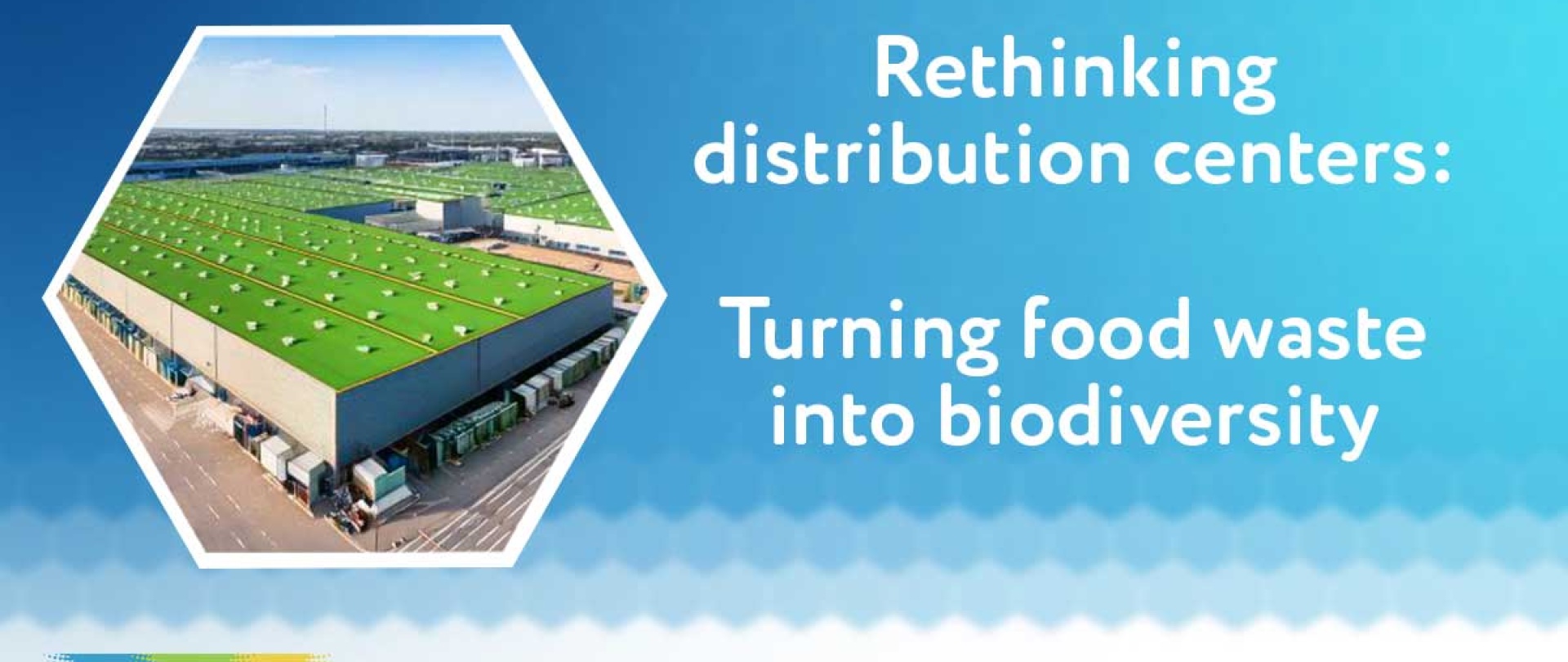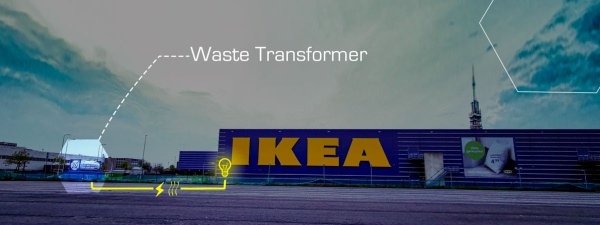
Adding to the challenges, the large workforce in these centers inevitably contributes to significant food waste. While this waste may seem like an afterthought in the larger operational ecosystem, it holds untapped potential to transform these centers from environmental burdens to biodiversity boosters.
A vision for green distribution centers
Imagine a scenario where distribution centers use their food waste as a resource to support green roofs. These rooftops, fertilized with food waste based fertilizer produced on-site, could foster local biodiversity, providing habitats for plants and animals displaced by the development of the facility itself.
The benefits of green roofs
- Enhanced local ecosystems: By creating green roofs that mimic natural habitats, distribution centers could reintroduce greenery and biodiversity to areas currently dominated by concrete.
- Improved air quality: Vegetation on green roofs can absorb fine particulate matter contributing to cleaner air.
- Stormwater management: Green roofs retain rainwater, reducing runoff and minimizing the risk of flooding in surrounding areas.
- Public perception shift: By visibly addressing environmental concerns, these green initiatives could transform public opinion, showcasing distribution centers as sustainability leaders.
- Reduced urban heat island effect: Green roofs help to lower ambient temperatures, benefiting both the building and the surrounding area.

Turning food waste into fertilizer
On-site food waste valorization support to process food scraps from employees into nutrient-rich fertilizer. This process reduces the carbon footprint associated with transporting food waste off-site and minimizes landfill contributions, which often results in methane emissions.
Challenges to consider
- Structural reinforcement: Green roofs require stronger support systems, increasing construction costs. However, the long-term measured environmental and reputational benefits can offset these expenses.
- Maintenance: Maintaining a green roof ecosystem requires planning and resources but offers significant environmental returns and increase the lifetime of the underlying bitumen roof.
A holistic approach to sustainable logistics
By integrating green roofs fertilized by food waste into their design, distribution centers can evolve into eco-conscious facilities that support local biodiversity and reduce environmental harm. This approach not only addresses public concerns but also sets an example of how industrial operations can coexist with nature.
In an era of growing environmental awareness, distribution centers have an opportunity to lead the way in rethinking industrial design—turning concrete blocks into beacons of sustainability and green innovation.
About The Waste Transformers: The Waste Transformers is a Dutch cleantech pioneer, providing on-site innovative technologies to transform unavoidable food waste into sustainable energy and natural fertilisers, enabling local positive change.

